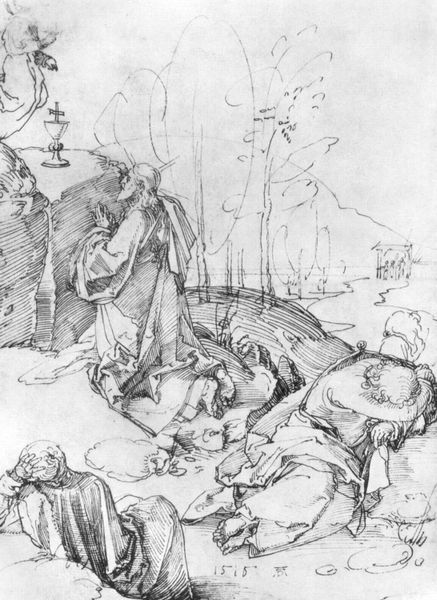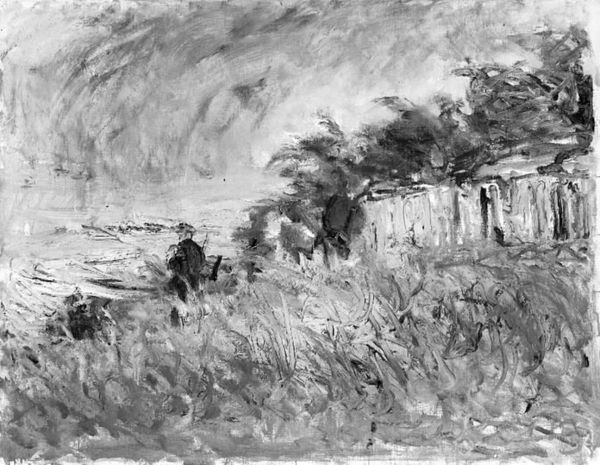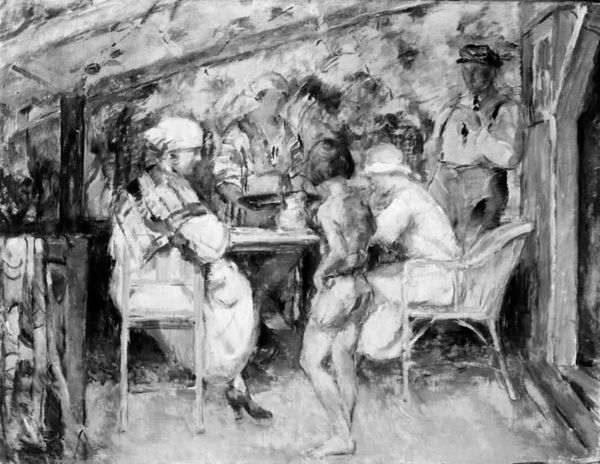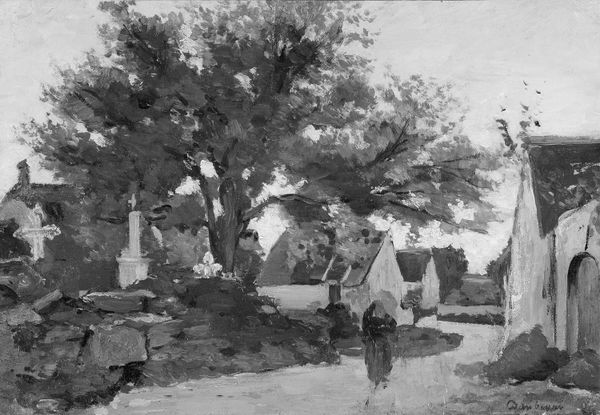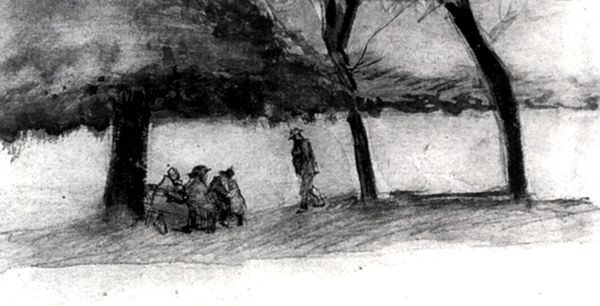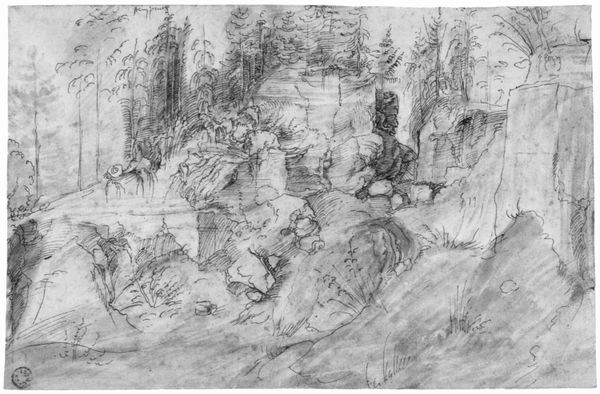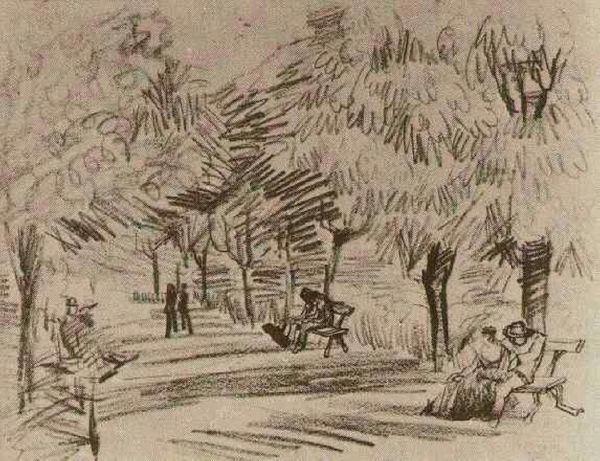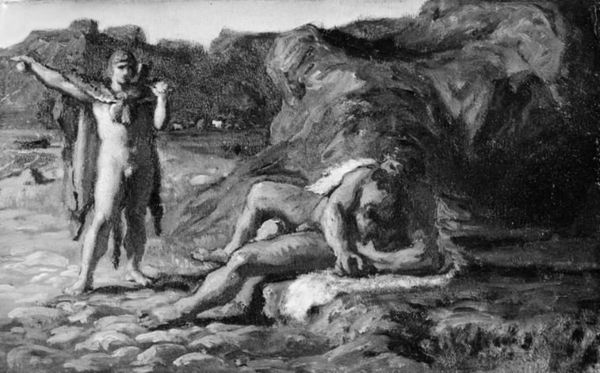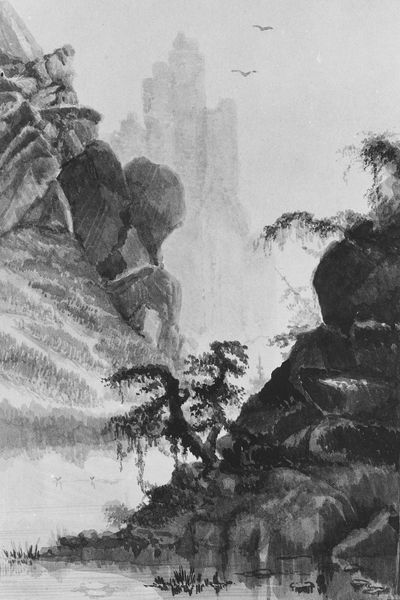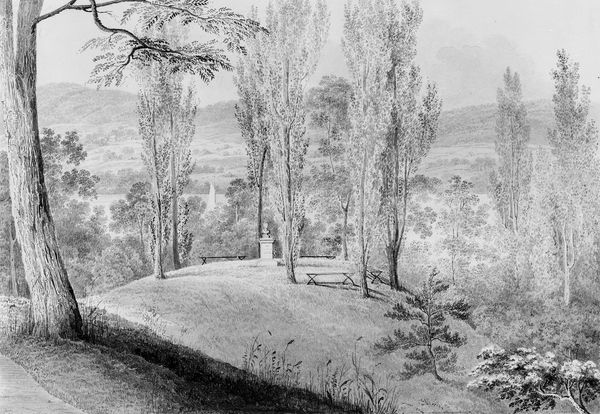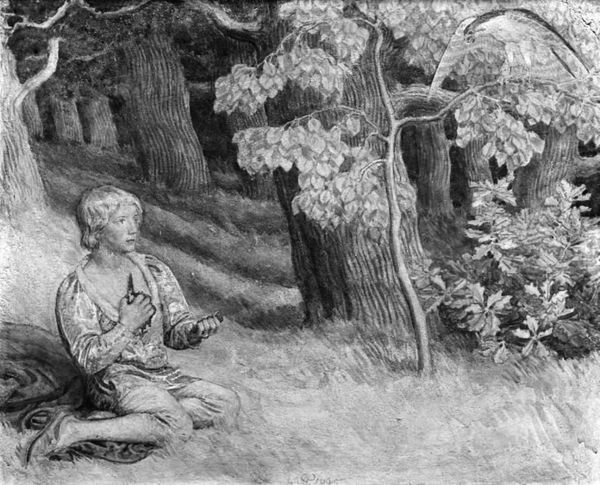
Dimensions: 50 cm (height) x 61 cm (width) (Netto)
Curator: The first thing I notice is how the figures blend seamlessly with their surroundings, yet there’s a pronounced contrast between the shade in the foreground and the bright scenery behind them. It evokes a sense of privacy, perhaps a momentary escape. Editor: Henri Lebasque painted "Landscape with Figures" sometime between 1909 and 1913. It’s an oil on canvas currently held at the SMK, the National Gallery of Denmark. What I find most intriguing is the symbolic use of shade and light. The shadowed foreground suggests the complexities of personal relationships and inner thoughts. What do you think about the choice of figuration over, say, an abstract engagement with light here? Curator: Given Lebasque’s place within the Post-Impressionist movement, which valued the subjective expression of the artist above objective naturalism, it appears he wants us to recognize the scene. He captures fleeting moments of modern life but with this particular kind of emphasis, perhaps it aims to subtly comment on societal values, the increasing importance of leisure time, and even the changing roles of women in that era. There are three of them. Is that important to the reading, symbolically? Editor: Precisely. These women, adorned in their period hats and dresses, might signify more than just leisurely figures. Headwear specifically, from antiquity, frequently connoted station or class, of course, so in this case are their choices an engagement with a desire to convey something specific to Lebasque's own contemporaries and patrons? There’s a distinct layering of implied meaning. And notice, too, the loose brushstrokes: not only do they add movement and vitality, suggesting a modern experience, but in their execution is a reference to tradition: is the man just to be seen from a distance or as separate? Curator: Absolutely. It suggests the fleeting, transient nature of Impressionism while providing a visual representation of the era’s ideals regarding beauty, family and leisure, what you could call their cultural currency. The landscape almost takes on an allegorical dimension. And even from the light you could perhaps propose some ideas: the darkness around the foreground perhaps connoting difficult times and a brighter, sunlit and prosperous era beginning or imminent beyond. Editor: An astute point. The image then, when you frame it within the period’s context, is quite layered. Curator: It goes beyond mere depiction; it engages the viewer in a discussion on the contemporary cultural moment, with this symbolic encoding adding complexity to what appears, at first glance, to be an ordinary scene. Editor: Ultimately, "Landscape with Figures" serves as a valuable case study of the subtle but poignant narratives conveyed through impressionistic approaches. Curator: A rewarding experience that demonstrates that public life has the capacity to be anything but ordinary.
Comments
No comments
Be the first to comment and join the conversation on the ultimate creative platform.

